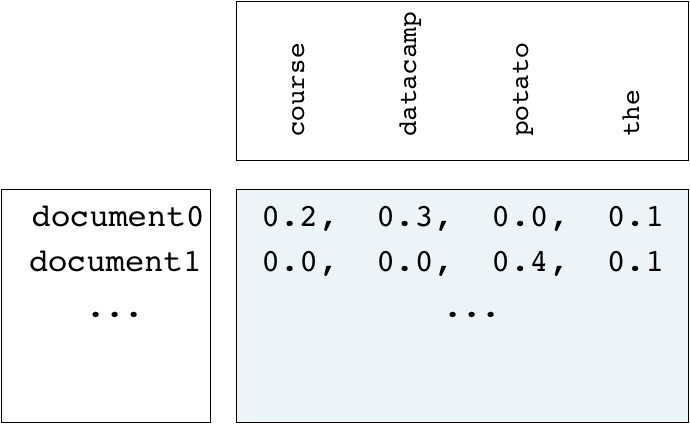Non-negative matrix factorization (NMF)
Unsupervised Learning in Python

Benjamin Wilson
Director of Research at lateral.io
Non-negative matrix factorization
- NMF = "non-negative matrix factorization"
- Dimension reduction technique
- NMF models are interpretable (unlike PCA)
- Easy to interpret means easy to explain!
- However, all sample features must be non-negative (>= 0)
Interpretable parts
- NMF expresses documents as combinations of topics (or "themes")

Interpretable parts
- NMF expresses images as combinations of patterns

Using scikit-learn NMF
- Follows
fit()/transform()pattern - Must specify number of components e.g.
NMF(n_components=2) - Works with NumPy arrays and with
csr_matrix
Example word-frequency array
- Word frequency array, 4 words, many documents
- Measure presence of words in each document using "tf-idf"
- "tf" = frequency of word in document
- "idf" reduces influence of frequent words

Example usage of NMF
samplesis the word-frequency array
from sklearn.decomposition import NMFmodel = NMF(n_components=2)model.fit(samples)
NMF(n_components=2)
nmf_features = model.transform(samples)
NMF components
- NMF has components
- ... just like PCA has principal components
- Dimension of components = dimension of samples
- Entries are non-negative
print(model.components_)
[[ 0.01 0. 2.13 0.54]
[ 0.99 1.47 0. 0.5 ]]
NMF features
- NMF feature values are non-negative
- Can be used to reconstruct the samples
- ... combine feature values with components
print(nmf_features)
[[ 0. 0.2 ]
[ 0.19 0. ]
...
[ 0.15 0.12]]
Reconstruction of a sample
print(samples[i,:])
[ 0.12 0.18 0.32 0.14]
print(nmf_features[i,:])
[ 0.15 0.12]

Sample reconstruction
- Multiply components by feature values, and add up
- Can also be expressed as a product of matrices
- This is the "Matrix Factorization" in "NMF"
NMF fits to non-negative data only
- Word frequencies in each document
- Images encoded as arrays
- Audio spectrograms
- Purchase histories on e-commerce sites
- ... and many more!
Let's practice!
Unsupervised Learning in Python

